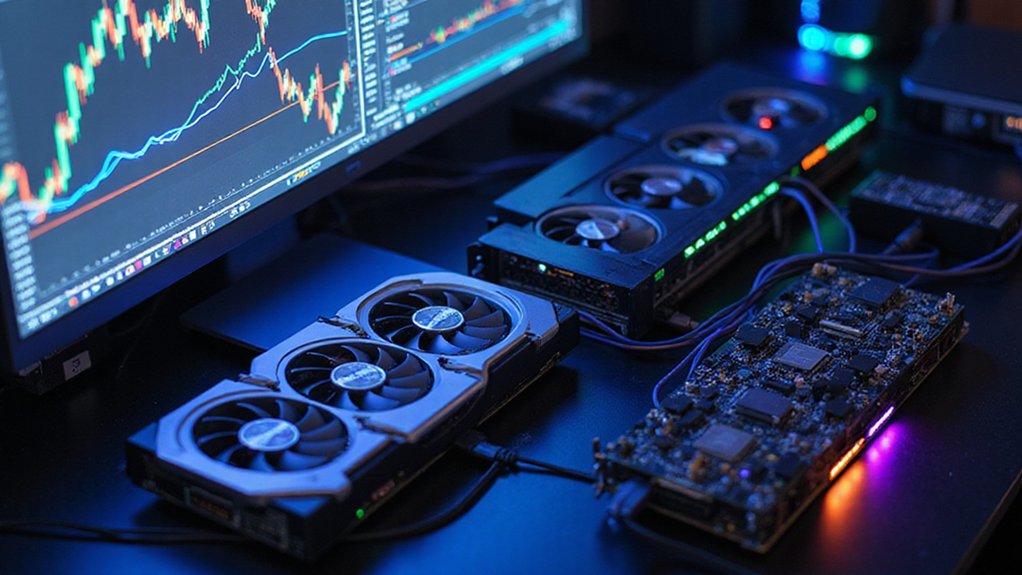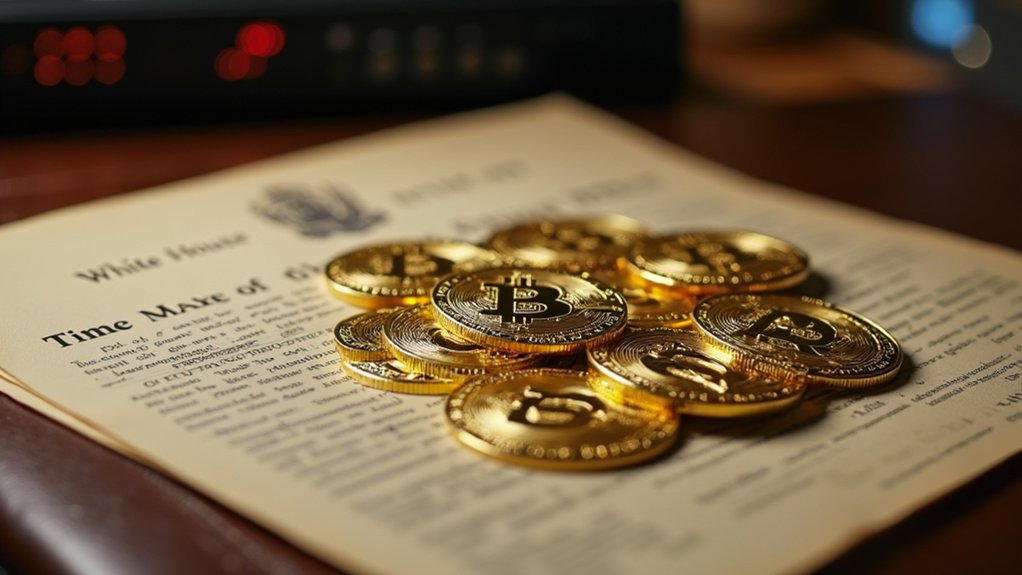DeFi eliminates traditional financial intermediaries through blockchain-based smart contracts that automatically execute lending, borrowing, and trading operations without human oversight. These protocols operate primarily on Ethereum, offering global accessibility and transparency through public ledgers while promising rapid transactions and instant access to financial services. However, smart contract vulnerabilities and regulatory uncertainty create significant risks that users must navigate independently. The technology’s genuine innovation comes with the caveat that eliminating middlemen transfers considerable responsibility—and potential consequences—directly to participants who venture further into this evolving landscape.

While traditional finance has spent centuries perfecting the art of inserting itself between people and their money, decentralized finance—or DeFi—represents a rather audacious attempt to eliminate these well-compensated middlemen entirely. This peer-to-peer financial system operates on blockchain technology, primarily Ethereum, using smart contracts to automate transactions that would otherwise require banks, brokerages, or other intermediaries who seem perpetually surprised when asked to justify their existence.
The mechanics are elegantly simple: self-executing code replaces human gatekeepers, enabling lending, borrowing, trading, and insurance without the traditional pageantry of credit checks, account applications, or the inexplicable three-day waiting periods that banks impose on digital transactions. Users need only a digital wallet to access these services, participating pseudonymously while maintaining global accessibility—a concept that must seem revolutionary to anyone who has ever tried to wire money internationally.
DeFi’s self-executing code eliminates traditional banking gatekeepers, offering global financial services through a simple digital wallet—no permission required.
Smart contracts execute financial agreements automatically, with transaction details recorded transparently on public blockchains. This transparency stands in stark contrast to traditional finance’s opacity, where determining actual fees often requires forensic accounting skills. The composable nature of DeFi protocols allows developers to combine multiple services, creating complex financial products with the efficiency that legacy institutions might achieve if they weren’t burdened by shareholders expecting consistent profitability. By processing transactions through on-chain operations, these protocols ensure that all financial activities are permanently recorded on the blockchain itself, providing unprecedented transparency and verifiability.
The benefits are compelling: instant access without bureaucratic approval processes, rapid transaction speeds (some platforms refresh interest rates every fifteen seconds), and the flexibility to move assets without seeking permission from institutions that consider customer funds their personal lending inventory. DeFi transactions are recorded in a distributed ledger where each verified block contains encrypted information from previous blocks, creating an immutable chain of financial records. The sector has experienced remarkable growth, with total value locked expanding from $1 billion in 2020 to over $120 billion by 2025.
However, the nascent technology carries significant risks—smart contract vulnerabilities, insufficient security testing, and the occasional spectacular hack that reminds everyone why traditional finance employs so many lawyers.
Regulatory uncertainty looms large, with authorities still determining how to classify these protocols. The degree of actual decentralization varies considerably among platforms, and the correlation between promised returns and underlying risks remains as immutable as gravity.
While DeFi offers genuine innovation in financial infrastructure, participants would be wise to remember that eliminating intermediaries doesn’t eliminate risk—it simply redistributes responsibility to users who may not fully appreciate what they’re assuming.
Frequently Asked Questions
What Happens to My Defi Investments if the Protocol Gets Hacked?
When a DeFi protocol suffers a hack, investors typically face immediate and often total loss of their deposited funds.
Unlike traditional finance, no regulatory safety nets exist—no FDIC insurance, no legal recourse, no guaranteed compensation.
Recovery depends entirely on the protocol’s voluntary goodwill, which materializes rarely and slowly (if at all).
The decentralized nature that attracts investors ironically becomes their greatest vulnerability, transforming “be your own bank” into “absorb your own losses.”
How Much Money Do I Need to Start Using Defi Platforms?
DeFi platforms accommodate remarkably flexible entry points—one can begin with mere hundreds of dollars, though Ethereum’s capricious gas fees often devour smaller investments with particular voracity.
While institutional funds demand $25,000 minimums for accredited investors, direct protocol participation requires only enough capital to cover transaction costs and meaningful position sizes.
Smart money suggests starting with at least $1,000 to absorb fees while maintaining exposure to potential returns—assuming one’s appetite for smart contract vulnerabilities remains intact.
Can I Lose More Money Than I Originally Invested in Defi?
Yes, investors can lose considerably more than their initial capital in DeFi through several mechanisms.
Leveraged positions and complex derivative products amplify losses beyond principal amounts, while impermanent loss in liquidity pools can exceed original investments when token prices diverge dramatically.
Smart contract exploits may drain entire pooled funds, and liquidation cascades in borrowing protocols can wipe out collateral plus accrued debt—making traditional investment loss limits quaint relics.
Which Defi Platforms Are Considered the Safest for Beginners?
For beginners seeking relatively safer DeFi entry points, established platforms like Uniswap and PancakeSwap offer proven track records, while centralized exchanges such as Binance (with its $8 billion TVL) provide regulatory oversight and customer support—albeit with custody trade-offs.
Hardware wallets like Ledger Stax enhance security, though software wallets with integrated DEX features reduce third-party exposure.
Aave and Compound represent time-tested lending protocols, balancing accessibility with robust security measures for cautious newcomers.
How Do I Recover My Funds if I Lose My Wallet?
Recovering lost DeFi wallet funds hinges entirely on possessing the 12-word recovery phrase—that seemingly innocuous string of words that serves as the master key to one’s digital fortune.
Without this phrase, recovery becomes virtually impossible due to DeFi’s decentralized nature.
Those fortunate enough to have preserved their seed phrase can restore wallet access through “Restore Account” options, while others face the sobering reality of permanent fund loss.









